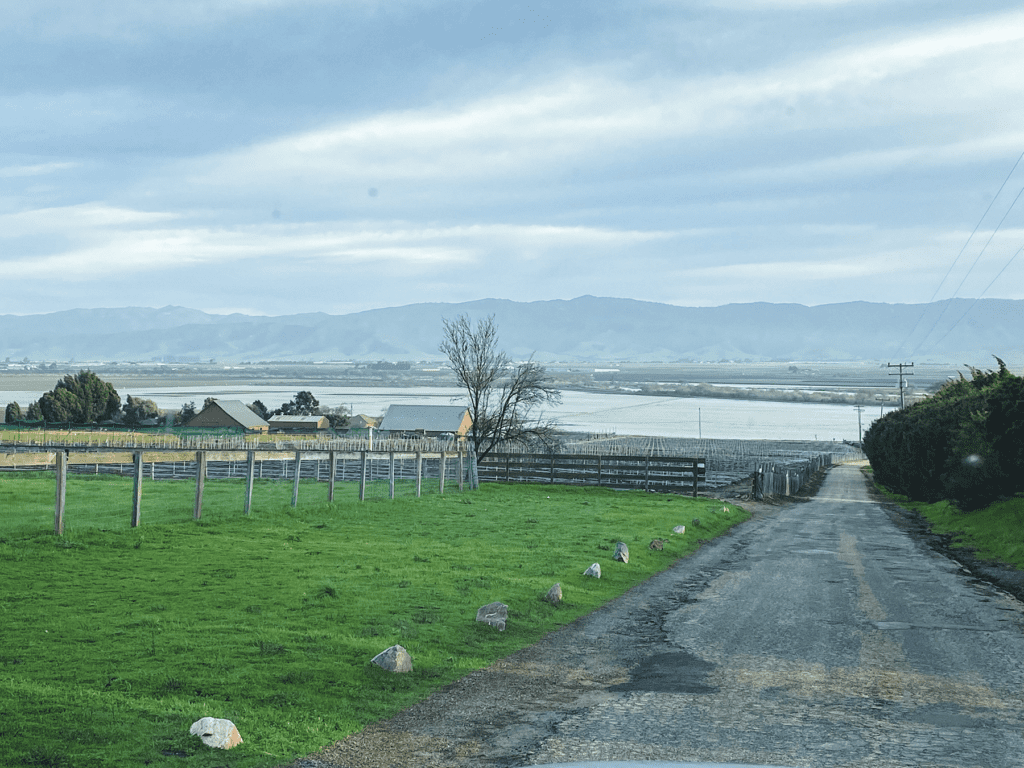Feb 2, 2023California growers determine options in wake of flooding
With the rains that flooded much of California since late December abating, growers are beginning the complicated process of calculating the damage.
Norm Groot, executive director of the Monterey County Farm Bureau, joined experts from the International Fresh Produce Association for a Feb. 1 webinar to provide updates on the status of the state’s crops.


Groot sounded a positive note, pointing out that the floods struck during a time when many area fields are fallow.
“Most of the fields at this point are idle because we are producing most of our leafy greens and vegetable crops in the desert areas of California and Arizona,” he said.
Of the 220,000 acres of irrigated land in Monterey County, home to the fertile Salinas Valley, an estimated 20,000 acres were affected by flooding, Groot said, with strawberries being the main crop affected. While that translates to an estimated $40 million in losses, Groot said the area had braced for worse.
“The predictions that we saw where we were going to have bridge failures and roadways impacted – we do have some of that, but it’s not nearly as extensive as originally predicted,” he said.
With water still standing in some fields and the Salinas River still flowing south to north at about 800 cubic feet per second, “it may take several weeks before we have access to some of these areas and really can determine how much damage there is,” Groot said. “It’s taking time to get back into those fields. There’s still a lot of mud and there’s still a lot of debris that has to be dealt with.”
Groot said the area was able to collect some of the water in reservoirs and that shallow aquifers have benefited from groundwater absorbed through porous soil. While many of the area’s dirt levees overtopped or failed, some of those breaks helped relieve pressure from the river.
Growers are expressing concerns about fixing those levees, Groot said, though that process is complicated by the fact that the Salinas River is privately owned.
Landowners are responsible for river channels and surrounding levees but also regulated by numerous agencies that Farm Bureau is helping growers navigate.
Groot also hears from growers asking how long before they can do their first planting, but that answer is also up in the air as the fields and their infrastructure recover.
As for crops harvested from flooded fields, the Food and Drug Administration can deem them unacceptable for consumption because of microbiological and/or chemical contaminants.


FDA guidance is clear, said Jennifer McEntire, IFPA chief food safety and regulatory officer.
“If floodwater has contacted the edible portion of the crop, that is considered adulterated,” McEntire said. “That’s fairly straightforward (and) includes crops that grow underground. … Simply having excess rainwater, that’s not floodwater. That’s pooled water. You may have some concerns around it, but it doesn’t render the product adulterated upon contact.”
Growers should have a plan of action in place in case contaminants are discovered, she said.
“If growers do their due diligence and are able to demonstrate that they’ve done their assessment, that they have things under control, I’m not sure that the FDA would be inclined to do something unusual,” McEntire said.
Organics: Yet another level of concern
Organic growers also face the risk of contaminants carried by floodwater from a conventional field.
IFPA’s Emily Moyer directs concerned growers to first look at the U.S. Department of Agriculture’s National Organic Program requirements.
“Any land being used to grow and harvest organic crops must have had no prohibited substances or inputs applied to it for a period of three years immediately preceding that first organic-certified harvest season,” Moyer said. “I think one of the key words here is applied. That sort of implies intent. You cannot intentionally apply these prohibited substances.”
Prohibited substances borne by floodwaters would not be intentionally applied, she said, nor would NOP requirements regarding adjacent land, such as buffer zone and runoff diversions, be strictly relevant in the case of floodwater.
“There is not a precedent that we’re aware of where flooded land has to re-undergo that three-year transition again, unless perhaps maybe there’s clear evidence of persistent residues of these prohibited substances,” Moyer said.
If unintentional residues are detected on food products, the USDA does have protocols in place, and the agency can also establish temporary variances in cases of natural disasters, Moyer said.
“After all of these considerations, if you are an organic producer and you do still have concerns, my best advice would be to reach out to your certifier,” she said. “More than likely they’re already aware of this situation and should be able to provide guidance unique to your specific situation.”
Groot said an overriding concern among California growers stemming from the most recent flooding encompasses a larger issue.
“The ultimate question is, why can’t we capture more water for storage during times of our drought?” he said. “We have a lot of water that’s flowing out to the ocean right now. Why are we not capturing it for when we do have those drought years?
“Coming out of three years of drought now, it’s highly noted that we need to really figure this out finally here in California. Stop talking about it and let’s start building some facilities.”
— Melinda Waldrop, Organic Grower managing editor
Photo: Of the 220,000 acres of irrigated land in Monterey County, home to the fertile Salinas Valley, an estimated 20,000 acres were impacted by flooding. Photo: California Farm Bureau Federation















